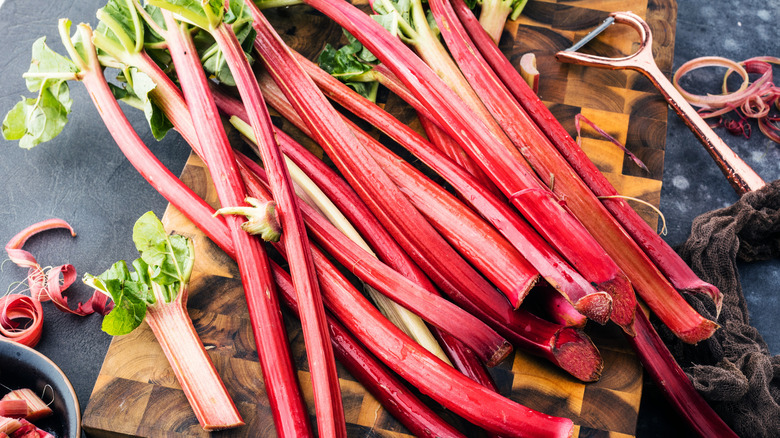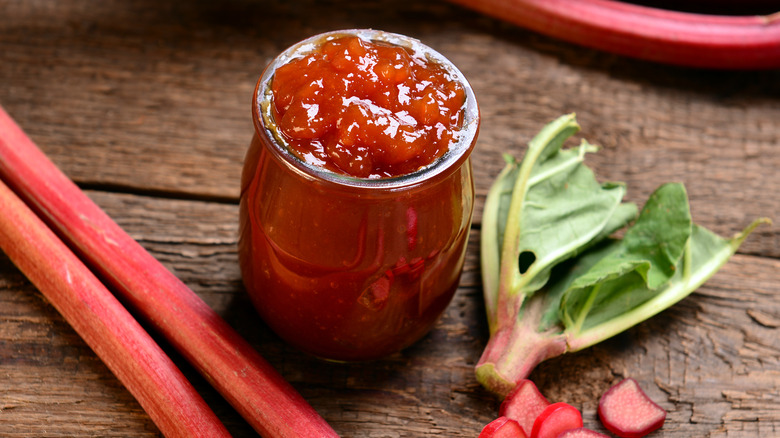What To Look For When Purchasing Rhubarb For Any Recipe
Seeing crimson stalks of rhubarb pop up in grocery stores, farmers markets, and even your garden is a great sign that the worst of winter is over and spring is in full swing. Available for a limited time from April through June, per Food Network, this tart vegetable has a short season that you should take full advantage of — and that means knowing what to look for when purchasing rhubarb for your recipes.
While rhubarb can come in a variety of colors: green, magenta, and sometimes even speckled, the general rule is the redder, the better. Epicurious suggests that scarlet stalks of rhubarb will be sweeter and riper, although Cook's Illustrated says the difference is merely aesthetic, as rhubarb has sour-tasting compounds no matter what color it is.
Like most produce, quality rhubarb should be free of major blemishes. It should also have crisp and shiny stalks that aren't curled or floppy, which could mean they were picked a while ago, per Bon Appétit. Slender stalks are also better in terms of their less fibrous texture. While most rhubarb will already have its roots and leaves removed — as you should never eat rhubarb leaves, which are toxic — these are often good indicators of quality. The presence of large, wilted leaves could indicate produce that is less than fresh, while Food52 explains that an exposed root can also let you know whether the rhubarb matured fully before it was picked.
Storing and using ripe rhubarb
Now that you know how to find the perfect bunch of rhubarb, there are a few things you'll want to remember so it stays as fresh as the day you brought it home. First, trim the tops and bottoms of the stalk and peel away any stringy strands from the root upward, as you might do with celery. Also, remember to get rid of any leaves if they haven't already been removed. If you don't plan to use it within a few days, seal the washed and cut rhubarb in wrapping or a container and store in your freezer for up to three months before it deteriorates (via Food Network). This process will allow you to keep your rhubarb tasty until you know what to do with it. Just remember that frozen rhubarb will hold more water once it's thawed, so make sure to drain any excess liquid.
As for how to cook with rhubarb, know that it's best when sweetened and balanced with other ingredients, as its raw form is extremely sour. With a texture reminiscent of celery, cooking will also soften its crunchy stalks. Along with adding a tasty tang, rhubarb adds a bright burst of color to any dish — think sweets like loafs and galettes or savory recipes incorporating pickled rhubarb. Whether you slice, dice, bake, or sauté it, you can be confident that you now know exactly what to look for when purchasing rhubarb for any recipe.

